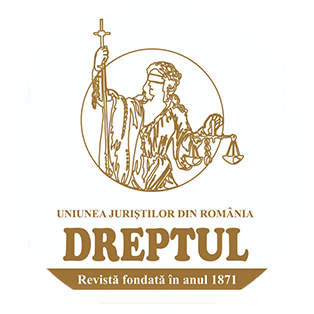-
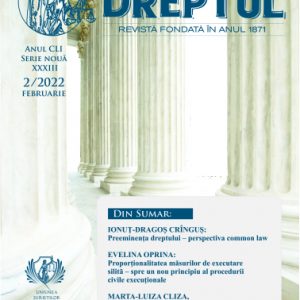 The present study intends to analyze the principle of preeminence of law and a few perspectives over this principle, especially the common law perspective. The author starts from the premise that the principle of preeminence of law is a common European value on which any democratic state must be founded, being the essence of the state of law and also an element of the common heritage of the Member States of the Council of Europe. The author has, as a research hypothesis, the fact that the history of Romania and its political course in the last century raises problems of understanding a philosophy based on the concept of preeminence of law. Coming after a period of communism, in many respects our country has passed from one extreme to the other, from many restrictions to too much freedom and legislative or power void, from a typology of totalitarian regulation to a form sometimes too liberal, which causes a functional instability of the state as a whole. One can notice that the elaborated study has as objectives the analysis of the general concepts recognized in common law regarding the preeminence of the law for the development of the Romanian legal doctrine in order to deeply understand and fully implement this principle in our legal system, and – more broadly – in our society. Regarding the research methods, the comparative and the quantitative method have been predominantly used, with elements that refer to the sociological and historical method. Notions and concepts specific to common law-type systems have been presented in order to identify possible solutions for taking over and integrating these concepts in our legal system. From the point of view of the results of the research, it has been concluded that the preeminence of law is aspirational and, therefore, it is a matter of degree. From the perspective of our country, we have shown that we have not yet succeeded in overcoming the horrors of the past, with reference here to the ideologies, philosophies and mentalities that have become part of us in the last century. Things are constantly evolving, but we have failed to achieve the level of civilization and understanding that exists in true democracies, one of the causes being the inconsistency of the choices we have made in the last 32 years. Regarding the theoretical and practical implications of the study, they consist in understanding some specific concepts developed in the common law-type systems, the need to implement and fully assume, at society level, the principle of the preeminence of law, with all its components and mechanisms, as well as of the awareness of the current historical moment, in which we must progress at the level of society towards the ideal of a developed and happy society.
The present study intends to analyze the principle of preeminence of law and a few perspectives over this principle, especially the common law perspective. The author starts from the premise that the principle of preeminence of law is a common European value on which any democratic state must be founded, being the essence of the state of law and also an element of the common heritage of the Member States of the Council of Europe. The author has, as a research hypothesis, the fact that the history of Romania and its political course in the last century raises problems of understanding a philosophy based on the concept of preeminence of law. Coming after a period of communism, in many respects our country has passed from one extreme to the other, from many restrictions to too much freedom and legislative or power void, from a typology of totalitarian regulation to a form sometimes too liberal, which causes a functional instability of the state as a whole. One can notice that the elaborated study has as objectives the analysis of the general concepts recognized in common law regarding the preeminence of the law for the development of the Romanian legal doctrine in order to deeply understand and fully implement this principle in our legal system, and – more broadly – in our society. Regarding the research methods, the comparative and the quantitative method have been predominantly used, with elements that refer to the sociological and historical method. Notions and concepts specific to common law-type systems have been presented in order to identify possible solutions for taking over and integrating these concepts in our legal system. From the point of view of the results of the research, it has been concluded that the preeminence of law is aspirational and, therefore, it is a matter of degree. From the perspective of our country, we have shown that we have not yet succeeded in overcoming the horrors of the past, with reference here to the ideologies, philosophies and mentalities that have become part of us in the last century. Things are constantly evolving, but we have failed to achieve the level of civilization and understanding that exists in true democracies, one of the causes being the inconsistency of the choices we have made in the last 32 years. Regarding the theoretical and practical implications of the study, they consist in understanding some specific concepts developed in the common law-type systems, the need to implement and fully assume, at society level, the principle of the preeminence of law, with all its components and mechanisms, as well as of the awareness of the current historical moment, in which we must progress at the level of society towards the ideal of a developed and happy society. -
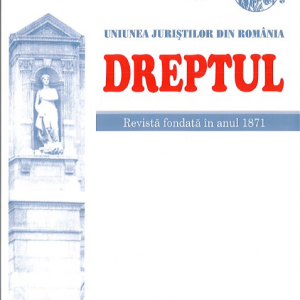 The study intends to present the doctrinal opinions regarding the definition of the prejudice, which represents a condition and measure of the civil liability, the tripartite classification of the prejudices into patrimonial, extra-patrimonial and bodily harm and the indissoluble connection with the concepts of reparation, compensation and indemnification, the own identity of the bodily harm and the ambivalent character of the reparation, either patrimonial and non-patrimonial. It aims to analyze the particularities of the three categories of prejudices, the personal and rebound character of the bodily harm, the conditions for the reparation of the patrimonial prejudices, the certain character of the prejudice and the mitigation of this requirement in the case of the prejudices caused by the loss of a chance, the direct character of the prejudice in correlation with the direct and indirect causal link, the personal and reasonably predictable character of the prejudice, the principle of full reparation of the prejudice and mora creditoris, as a cause of limitation of the debtor’s liability, the guilt, condition of the liability for the reparation of the prejudice. The author also analyzes the presumption of guilt in the contracts generating the obligations of result and the proof of guilt in the contracts generating the obligations of means, as well as the causes exonerating the liability, the classification of damages into compensatory and moratorium damages, the problem of cumulating the damages with the contractual remedies, the cumulation of the damages with the execution of the contractual obligations, of the cumulation of the damages between them and the foundation of their non-cumulation, the judicial evaluation of the damages and their updating, the sanctioning character of the penalizing interest related to the cash claims.
The study intends to present the doctrinal opinions regarding the definition of the prejudice, which represents a condition and measure of the civil liability, the tripartite classification of the prejudices into patrimonial, extra-patrimonial and bodily harm and the indissoluble connection with the concepts of reparation, compensation and indemnification, the own identity of the bodily harm and the ambivalent character of the reparation, either patrimonial and non-patrimonial. It aims to analyze the particularities of the three categories of prejudices, the personal and rebound character of the bodily harm, the conditions for the reparation of the patrimonial prejudices, the certain character of the prejudice and the mitigation of this requirement in the case of the prejudices caused by the loss of a chance, the direct character of the prejudice in correlation with the direct and indirect causal link, the personal and reasonably predictable character of the prejudice, the principle of full reparation of the prejudice and mora creditoris, as a cause of limitation of the debtor’s liability, the guilt, condition of the liability for the reparation of the prejudice. The author also analyzes the presumption of guilt in the contracts generating the obligations of result and the proof of guilt in the contracts generating the obligations of means, as well as the causes exonerating the liability, the classification of damages into compensatory and moratorium damages, the problem of cumulating the damages with the contractual remedies, the cumulation of the damages with the execution of the contractual obligations, of the cumulation of the damages between them and the foundation of their non-cumulation, the judicial evaluation of the damages and their updating, the sanctioning character of the penalizing interest related to the cash claims. -
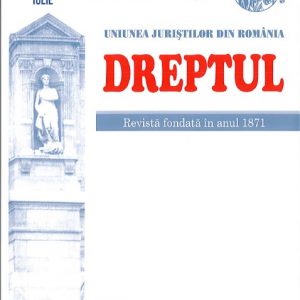 In the practice it was questioned the possibility of the public prosecutor from a public prosecutor’s office higher in hierarchy to take over cases from a public prosecutor’s office lower in hierarchy where the criminal prosecution has ended, following that the public prosecutor from the public prosecutor’s office higher in hierarchy settles the case by indictment. In an opinion this procedure has been appreciated as being fair, in another opinion it has been appreciated that there have been violated the rights of the defendant to a fair trial.
In the practice it was questioned the possibility of the public prosecutor from a public prosecutor’s office higher in hierarchy to take over cases from a public prosecutor’s office lower in hierarchy where the criminal prosecution has ended, following that the public prosecutor from the public prosecutor’s office higher in hierarchy settles the case by indictment. In an opinion this procedure has been appreciated as being fair, in another opinion it has been appreciated that there have been violated the rights of the defendant to a fair trial. -
 In the absence of an express legal obligation that obliges the data controller to prevent conflicts of interests in its organization, there were often raised in the judicial practice problems related to the existence of a legitimate purpose of data controllers in Romania to process the personal data of the candidates within a process of recruiting the future employees, respectively their family members, affiliates or even close persons, namely of the actual possibility to comply the data controller’s obligation to inform the data subject, being whether a candidate or a person close to them. The same problems arise also in case a potential or actual conflict of interests occurs during the execution of an individual employment contract, thus while the data subject is employed by the data controller. This study therefore seeks to expose the main issues related to the fulfilment of the legal requirements applicable to personal data processing operations performed for the purpose of managing conflicts of interests both in the public sector and in the private sector, aiming at ascertaining the existence of a legitimate purpose, of the legal basis applicable to such a process in accordance with the Regulation (EU) 2016/679 of the European Parliament and of the Council of 27 April 2016 on the protection of individuals with regard to the processing of personal data and on the free movement of such data and repealing Directive 95/46/EC (General Data Protection Regulation), but also the rights of the data subject, respectively the data controller’s obligations
In the absence of an express legal obligation that obliges the data controller to prevent conflicts of interests in its organization, there were often raised in the judicial practice problems related to the existence of a legitimate purpose of data controllers in Romania to process the personal data of the candidates within a process of recruiting the future employees, respectively their family members, affiliates or even close persons, namely of the actual possibility to comply the data controller’s obligation to inform the data subject, being whether a candidate or a person close to them. The same problems arise also in case a potential or actual conflict of interests occurs during the execution of an individual employment contract, thus while the data subject is employed by the data controller. This study therefore seeks to expose the main issues related to the fulfilment of the legal requirements applicable to personal data processing operations performed for the purpose of managing conflicts of interests both in the public sector and in the private sector, aiming at ascertaining the existence of a legitimate purpose, of the legal basis applicable to such a process in accordance with the Regulation (EU) 2016/679 of the European Parliament and of the Council of 27 April 2016 on the protection of individuals with regard to the processing of personal data and on the free movement of such data and repealing Directive 95/46/EC (General Data Protection Regulation), but also the rights of the data subject, respectively the data controller’s obligations -
 The extension of the preventive arrest is one of the instruments available to the judicial bodies in order to remove some threats to public order, undermining at the same time a fundamental right of the defendant, the right to freedom. The procedure of extension of the preventive arrest must respect the right to a fair trial, as regulated in the international conventions and the internal provisions. This article analyzes the possibility of breaching the principles of equality of arms and of equality of treatment in the procedure of judging the contestation against the decision to extend the preventive arrest measure.
The extension of the preventive arrest is one of the instruments available to the judicial bodies in order to remove some threats to public order, undermining at the same time a fundamental right of the defendant, the right to freedom. The procedure of extension of the preventive arrest must respect the right to a fair trial, as regulated in the international conventions and the internal provisions. This article analyzes the possibility of breaching the principles of equality of arms and of equality of treatment in the procedure of judging the contestation against the decision to extend the preventive arrest measure. -
 The official proclamation of the climate emergency (at an international, European, and national level) has stimulated the concerns and efforts to regulate and adopt public policies aiming for mitigation of, and adaptation to climate change. Initiated in the name of the principle of precaution – scientific uncertainty regarding the anthropic causes do not justify the inconsideration of the phenomenon, but they impose taking progressive and proportional measures – 30 years ago, the process of development of climate law has already known three successive and progressive stages, configured around three major international acts. The Framework Convention on climate change (1992) has generated a general normativity, as a guideline and non-binding; the additional Kyoto Protocol (1997), with a superior legal force, provided precise targets and determinate periods of time to reach them; finally, the Paris Agreement (2015) has marked the phase of voluntary commitments and of adequate instruments, varied in their means of enforcing. Characterized by a dependency and a major interconnection with scientific data, climate law is inspired by a series of fundamental concepts (general interest of humanity, environmental transition, the rights of future generations, global approach), and it is dominated by a series of general principles (precaution, common but differentiated responsibility, the right to a stable climate), affirming itself as a law of the present day, but especially of the future. Assuming the Green Deal as a new strategy for growth of the EU (2019), of the law for climate (2020) and the return of the USA to the Paris Agreement (2021) re-launch the multi-lateral framework for negotiation and international regulation in this field, opening ample perspective for affirmation of the new legal regime and the innovative scientific field.
The official proclamation of the climate emergency (at an international, European, and national level) has stimulated the concerns and efforts to regulate and adopt public policies aiming for mitigation of, and adaptation to climate change. Initiated in the name of the principle of precaution – scientific uncertainty regarding the anthropic causes do not justify the inconsideration of the phenomenon, but they impose taking progressive and proportional measures – 30 years ago, the process of development of climate law has already known three successive and progressive stages, configured around three major international acts. The Framework Convention on climate change (1992) has generated a general normativity, as a guideline and non-binding; the additional Kyoto Protocol (1997), with a superior legal force, provided precise targets and determinate periods of time to reach them; finally, the Paris Agreement (2015) has marked the phase of voluntary commitments and of adequate instruments, varied in their means of enforcing. Characterized by a dependency and a major interconnection with scientific data, climate law is inspired by a series of fundamental concepts (general interest of humanity, environmental transition, the rights of future generations, global approach), and it is dominated by a series of general principles (precaution, common but differentiated responsibility, the right to a stable climate), affirming itself as a law of the present day, but especially of the future. Assuming the Green Deal as a new strategy for growth of the EU (2019), of the law for climate (2020) and the return of the USA to the Paris Agreement (2021) re-launch the multi-lateral framework for negotiation and international regulation in this field, opening ample perspective for affirmation of the new legal regime and the innovative scientific field. -
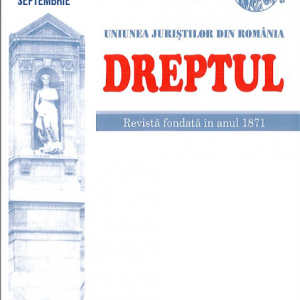 In this article we have looked into the content of the concept of case law of the European Court of Human Rights, determining in the national criminal process the legal nature and the presentation of the reasons for its application. We have also addressed the premises of using case law as a source of law within the criminal trial, highlighting the particularities and advantages of the applicability of the case law of the E.C.H.R. within criminal trial. Through the research carried out, it has been conducted a complex investigation of the theoretical-legislative aspects regarding the applicability of the case law of the E.C.H.R. within the criminal trial as a source of law. The paper formulates conclusions and recommendations that can represent a scientific basis for possible legislative amendments. In the present study, we reiterated the most current theoretical-applicative issues, as well as the methodological aspects regarding the applicability of the case law of the E.C.H.R. in the criminal trial, being revealed some concepts of major importance for the national doctrine and practice.
In this article we have looked into the content of the concept of case law of the European Court of Human Rights, determining in the national criminal process the legal nature and the presentation of the reasons for its application. We have also addressed the premises of using case law as a source of law within the criminal trial, highlighting the particularities and advantages of the applicability of the case law of the E.C.H.R. within criminal trial. Through the research carried out, it has been conducted a complex investigation of the theoretical-legislative aspects regarding the applicability of the case law of the E.C.H.R. within the criminal trial as a source of law. The paper formulates conclusions and recommendations that can represent a scientific basis for possible legislative amendments. In the present study, we reiterated the most current theoretical-applicative issues, as well as the methodological aspects regarding the applicability of the case law of the E.C.H.R. in the criminal trial, being revealed some concepts of major importance for the national doctrine and practice. -
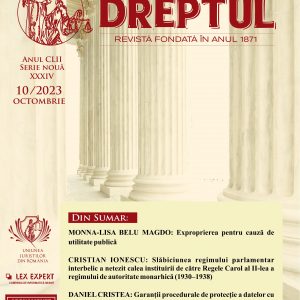
-
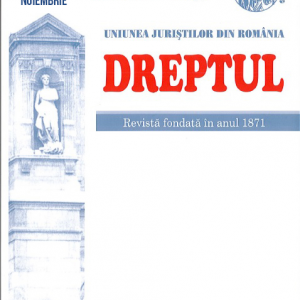 One of the major problems with direct implications in the effective implementation of judicial cooperation in criminal matters within the European Union is related to the need for coherent legal norms regarding the establishment of the territorial jurisdiction in the event of positive or negative conflicts of jurisdiction between the competent legal bodies of two or more Member States. In the study, the author examined the provisions of the European regulatory document framework which set out a series of legal norms on preventing and settling conflicts of jurisdiction between the Member States, making some critical remarks designed to help the improvement of the legal system. This paper is aimed at all those interested in this field and can be useful to academics and to practitioners as well. The innovations consist of the general examination of the European regulatory document provisions, of the Romanian special law, with some critical comments, and of proposals for rewording legal rules, aiming at improving the complex system of judicial cooperation in criminal matters between the Member States.
One of the major problems with direct implications in the effective implementation of judicial cooperation in criminal matters within the European Union is related to the need for coherent legal norms regarding the establishment of the territorial jurisdiction in the event of positive or negative conflicts of jurisdiction between the competent legal bodies of two or more Member States. In the study, the author examined the provisions of the European regulatory document framework which set out a series of legal norms on preventing and settling conflicts of jurisdiction between the Member States, making some critical remarks designed to help the improvement of the legal system. This paper is aimed at all those interested in this field and can be useful to academics and to practitioners as well. The innovations consist of the general examination of the European regulatory document provisions, of the Romanian special law, with some critical comments, and of proposals for rewording legal rules, aiming at improving the complex system of judicial cooperation in criminal matters between the Member States. -
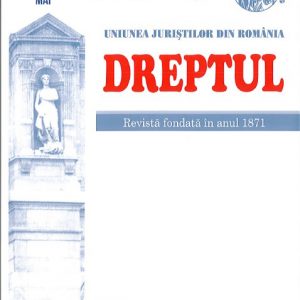 The article analyzes the changes brought in the matter of approval of the application for enforcement. In the Civil Procedure Code of 1865, the enforcement court had jurisdiction over the approval of the application for enforcement. By the Law No 459/2006, this jurisdiction has been changed and the power to approve the application for enforcement has been recognized to the court executor. By the Decision of the Constitutional Court No 458/2009, this change was declared unconstitutional and it was restored the approval of the application for enforcement by the enforcement court. By the Law No 134/2010, that is the new Civil Procedure Code, it has been preserved the approval of the enforcement by the enforcement court, however, by the Law No 138/2014, it was restored the form declared unconstitutional. Therefore, we have considered as being predictable the admission of the plea of unconstitutionality of the provisions of Article 666 of the Civil Procedure Code, by the Decision of the Constitutional Court No 895/2015. Following the Decision of the Constitutional Court No 895/2015, it has been adopted the Government Emergency Ordinance No 1/2016, which reinstated to the jurisdiction of the enforcement court the approval of the enforcement applications. In our opinion, the legal and correct solution is the approval of the enforcement by the enforcement court.
The article analyzes the changes brought in the matter of approval of the application for enforcement. In the Civil Procedure Code of 1865, the enforcement court had jurisdiction over the approval of the application for enforcement. By the Law No 459/2006, this jurisdiction has been changed and the power to approve the application for enforcement has been recognized to the court executor. By the Decision of the Constitutional Court No 458/2009, this change was declared unconstitutional and it was restored the approval of the application for enforcement by the enforcement court. By the Law No 134/2010, that is the new Civil Procedure Code, it has been preserved the approval of the enforcement by the enforcement court, however, by the Law No 138/2014, it was restored the form declared unconstitutional. Therefore, we have considered as being predictable the admission of the plea of unconstitutionality of the provisions of Article 666 of the Civil Procedure Code, by the Decision of the Constitutional Court No 895/2015. Following the Decision of the Constitutional Court No 895/2015, it has been adopted the Government Emergency Ordinance No 1/2016, which reinstated to the jurisdiction of the enforcement court the approval of the enforcement applications. In our opinion, the legal and correct solution is the approval of the enforcement by the enforcement court. -
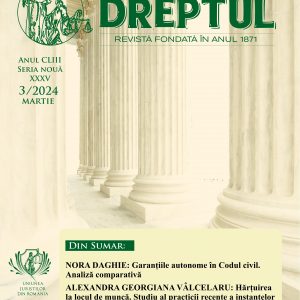
-
 Presumptions have been playing an important role in the civil trial, their necessity and utility being recognized both in the doctrine and in the judicial practice. Recently, in order to remove any doubt about the quality of means of evidence of the presumptions, the legislator of the Civil Procedure Code enumerates them among the means of evidence and, at the same time, establishes their legal regime, and the legislator of the Civil Code has extended the scope of the legal presumptions. The reason behind these regulations is based precisely on the necessity to find out the truth also in the cases in which the judge does not have available direct evidence. Certainly, as we have stated on another occasion, the presumptions are indirect means of evidence, as the conclusions drawn imply eo ipso the prior proof of a fact that is neighbouring and related to the unknown fact. As we shall further show, the Romanian legislator has understood to classify the presumptions into legal (established by law) and judicial or simple (left to the enlightments and wisdom of the judge), with the mention that, in this study, we shall refer in particular to the legal presumptions.
Presumptions have been playing an important role in the civil trial, their necessity and utility being recognized both in the doctrine and in the judicial practice. Recently, in order to remove any doubt about the quality of means of evidence of the presumptions, the legislator of the Civil Procedure Code enumerates them among the means of evidence and, at the same time, establishes their legal regime, and the legislator of the Civil Code has extended the scope of the legal presumptions. The reason behind these regulations is based precisely on the necessity to find out the truth also in the cases in which the judge does not have available direct evidence. Certainly, as we have stated on another occasion, the presumptions are indirect means of evidence, as the conclusions drawn imply eo ipso the prior proof of a fact that is neighbouring and related to the unknown fact. As we shall further show, the Romanian legislator has understood to classify the presumptions into legal (established by law) and judicial or simple (left to the enlightments and wisdom of the judge), with the mention that, in this study, we shall refer in particular to the legal presumptions.
